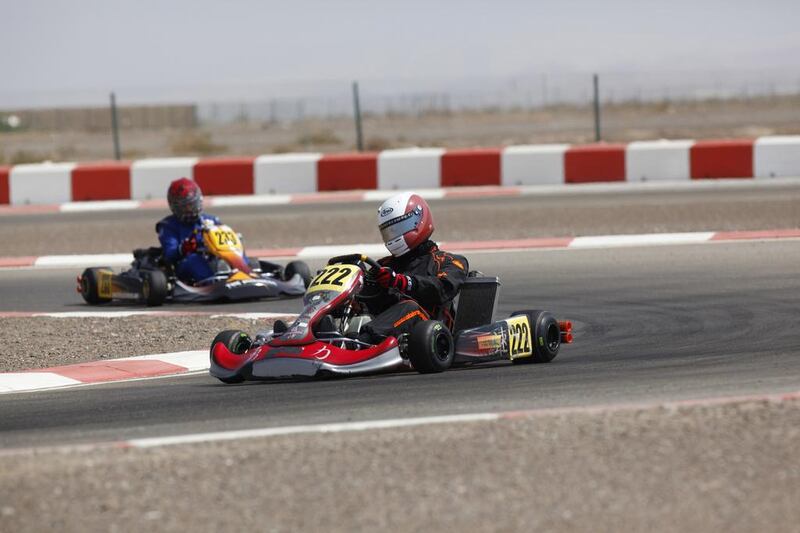Two years ago this month, the UAE played host to the karting Rotax Max Challenge Grand Finals at Al Ain Raceway, with the finest karters from across the globe congregating in the country.
Spearheading the local challenge was Mohammed Al Dhaheri, who drove commendably well in the DD2 category but was unable to reach the final.
Speaking to Al Dhaheri at the event was a refreshing experience as he talked honestly of the limitations of his ambitions.
Keen to get sponsorship to try to have a tilt at competing in Europe, Al Dhaheri acknowledged his age, being 24 at the time, was against him.
Future Formula One drivers are usually driving well before their age has reached double figures, and those who go on to other echelons of motorsport, possibly peaking with F1, are winning championships even before they hit their teenage years.
Al Dhaheri was 15 when he discovered karting. He was not talent scouted or picked. He happened to be going past Al Ain Raceway and fancied trying his hand at it.
His experience is what made the announcement on Wednesday at the Yas Viceroy Hotel by Abu Dhabi Racing (ADR) of a driver academy so encouraging. It was not just the fact the scheme, which will start after Sunday’s Etihad Airways Abu Dhabi Grand Prix, will exist, but rather the sensible, long-term thinking that has clearly been put into the project by all involved.
Seven teenagers, from 13 to 17, will be trained both in and out of the car in a bid to prepare them for a life in motorsport, with the ultimate goal being to get the first Emirati in to F1.
They will be given expert instruction behind the wheel as they continue to race karts in order to prepare them to move towards single-seater racing at the end of the eight-month period.
Khaled Al Qubaisi, the managing director of ADR, spoke passionately yesterday about the scheme, sponsored by Daman, but it was his refusal to make outlandish promises or pledges that was most impressive.
He declined to speculate when asked to predict when an Emirati would finally sit on the starting grid of a grand prix, and he stuck to the vision that there is no guarantee of when the country will get its first driver in the top level of motorsport.
Rather, it is about creating a system that can unearth talent and give them the best chance to fulfil their potential.
There is no certainty that any of the six boys and one girl who will be the first through the academy in the coming months will go on to reach F1 or even have a professional career in motorsport.
But by setting up a system that will continue picking the cream of the crop and pushing through a number of candidates, rather than the sporadic one or two candidates, as has been the way in the past, that can only be embraced as a good thing.
The law of averages are that the more options you have and the more drivers taking part, the increased probability that one of them will have the “it” factor that can make them go all the way and be good enough to compete in F1.
In Europe, there is a natural path forward for young drivers to develop.
Starting in karting, then moving up to single seaters in increasingly powerful vehicles leading up to F1.
Or if that does not work, another avenue such as GT racing, touring cars or even rallying, depending on the skills they have at their disposal.
Only time will tell how successful this scheme is and, like most new initiatives, there may be bumps initially in the first year.
But Wednesday could well be remembered, years from now, as the day that provided the catalyst for direct Emirati involvement in F1.
gcaygill@thenational.ae





